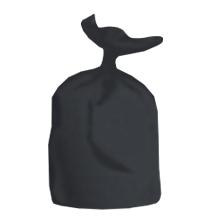To protect our raw water supply and wider environment, not all herbicides are approved for use in Guernsey. Those still available and the alternatives to chemical controls are described in more detail in the guidance provided on this page.
Herbicides containing Aminopyralid or Picloram are banned, as their persistence in the environment poses an unacceptable risk to our raw water supplies and for the longer-term contamination of land and composted products.
In addition, herbicides containing Glyphosate will only be available to use for those holding a relevant National Proficiency Test Council (NPTC) certificate of competence in the safe use of pesticides from 31st December 2022. These measures are also to protect our raw water supplies as the majority of the island's surface is being used for water catchment.
Which herbicides can I still use?
- UK approved professional and garden herbicides that are not banned in Guernsey can still be used by those with a relevant NPTC qualification.
- Some garden herbicides remain approved for use in Guernsey, but it is important to follow the product label instructions to avoid accidental pollution of our water courses.
- Remember to avoid using any pesticides near to vulnerable areas such as ponds and streams as per Guernsey Water guidance
- There are three types of herbicides available to the gardener in Guernsey:
- Contact: These are based on caustic substances that burn the foliage of the weed. They work best on young, small annual weeds and have little effect on larger established or perennial weed species. They have short persistence times in the environment and are of lower risk to it.
- Hormone type: These chemicals disrupt the normal growth of plants by mimicking the effects of plant hormones. Most are only approved for use for broad leaved weeds (annual & perennial) in lawns. The grass can generally tolerate the weedkiller better than the weeds, which being flatter, get a larger dose of the herbicide. They often have some residual properties and can persist in the soil for a few days to weeks but are also very soluble in water making them potential ground water contaminants too.
- Plant growth regulator: Maleic hydrazide can supress plant growth and induce dormancy in some plants. It is added to weedkillers for the control of both annual and perennial weeds. It is very soluble in water with the potential to be a ground water contaminant.
- Table 1: Types of garden herbicides currently approved for use in Guernsey
Mode of action
Active Ingredient
Comments
Contact
Fatty acids
Pelargonic acid
Acetic acidMoss & Algae control
Most effective on small, young annual weeds and weed seedlings. Check the product label for areas approved for its use.Contact
Iron (Ferrous) Sulphate
Used as a moss killer on lawns.
Can stain hard surfacesHormone -Type
2,4-D
Dicamba
Mecoprop-P
MCPA
Fluroxypyr
ClopyralidOnly approved for the treatment of broad-leaved weeds in lawns.
Clopyralid is related to Aminopyralid and has the potential to persist within the plant tissues even after composting. Ideally plants treated with clopyralid should not be composted.Hormone -Type
Triclopyr
Approved for use on unwanted vegetation and useful against woody weeds in grassland.
Plant growth Regulator
Maleic hydrazide
Approved for use on unwanted vegetation, hard surfaces areas not intended to bear vegetation, and near ornamental plants.
Can I control weeds without herbicides?
- Controlling weeds is rarely achieved by a single action but is an ongoing task, however, there are various alternatives to herbicides that can be very effective.
- Keep the weeds
- Many weeds are native species with specific value to certain birds or insects, especially pollinators such as bumble bees. Consider leaving certain areas of the garden where they can be allowed to grow and enjoy a more natural looking garden. Noxious or invasive non-native species of weeds may need to be controlled.
- Cultural methods
- Reducing the number of weed seeds.
- Remove flowers before seed is set: Some weeds can produce several batches of seed each year which can quickly build up the seed bank in the soil leading to numerous weeds seedlings germinating every year. To reduce the number of seed being shed, on a small scale, the weeds could be dead headed by hand before seed is set, or mown or strimmed, until you get time to tackle them in other ways.
- The stale seedbed technique is another way of reducing the number of seed in the soil that is very useful where areas of land need to be cleared to plant crops or before planting a site. The soil is prepared as if for seed sowing then left to any allow weed seed to germinate. Whilst the seedlings are still small, they can then be killed off by mechanical, thermal, or chemical methods as discussed below. This will kill the weeds and the process can be repeated if time allows to further deplete the weed seed bank in the soil.
- Solarisation is another version of the stale seedbed where the seedbed or soil is covered with an intact clear plastic sheet (ideally a reusable, UV resistant plastic). It only works if conditions are suitable (e.g., a sunny, well drained site) where the heat generated under the plastic plus lack of water can be enough to kill weed seedlings, seeds, and pathogens in top 10-15cm of soil. For best results incorporate well-rotted organic matter into the soil before you start, then create a seed bed with a fine level tilth, water well to encourage weed seeds to geminate then cover with clear plastic. Bury the edges of the plastic and repair any holes in the sheet to promote maximum heat build-up beneath. As weed seeds from different species can geminate at various times over the season the plastic is often left on from spring to autumn when cleaning up a patch of land for use, but good results can be obtained from 2-3 weeks of sunny weather. If temperatures of 50-60°C are obtained for 1-5 hours, seedlings, seeds and some soil pathogens can be significantly reduced in the top layer of soil. Once the plastic is removed the area should not be cultivated as this will bring untreated soil with live weed seed to the surface. Deep rooted, existing perennials may not be controlled using this method and may need hand weeding or chemical control.
- Occultation (Tarping) is a similar technique as solarisation but uses black polythene (or similar material) for 4-8 weeks instead. This doesn't create such high temperatures but removes light from the weed's seedling causing them to die. It can also be used to clear land of crop debris at the end of a season's growth instead of herbicides. Used over several months it can also reduce or weaken some perennial weeds.
- Burial of the top layer of soil can also help in situations where there is a lot of weed seed present near the surface but may not work if the soil is continually being cultivated and the weedy layer returns to the surface. Once weed numbers have reduced it is better not to disturb the soil - not only to maintain its structure, but also because surface cultivation can stimulate weed seed germination.
- Out-compete the weeds
- Growing vigorous, fast-growing plants that can outcompete the weeds can also reduce the number that survive to set more seed. Courgette or potato crops are very good at smothering weeds; however, some very vigorous plants may not be suitable in all situations. Giving the plants you wish to keep the best conditions for growth such as a fertile soil with a good structure, adequate feed and water will also help them grow rapidly and out-compete most weeds.
- Rotation of crops
- When growing vegetables or other annual plantings, consider rotations to avoid the same plant being grown in the same place every year. This not only helps reduce pest and disease but also give an opportunity to use a more vigorous crop to reduce weeds that have grown up in a less competitive crop such as onions.
- The use of cover crops or green manures as part of a rotation can improve soil structure and fertility but will also compete with any weeds trying to grow.
- Careful fertiliser use
- Weeds, like other plants, can be encouraged to grow by the use of fertilisers. Avoiding the over- application of fertilisers and ensure that they are applied only when and where needed to reduce unwanted weed growth.
- Weed-proof membranes
- These products are sheets of material through which water can pass but weeds cannot grow through them. They are secured in place over the soil surface. They are generally used in conjunction with mulches and work best if weeds (especially perennials) are controlled prior to using them.
- Mulches: bio-degradable & non-biodegradable mulches
- Non-biodegradable mulches such as gravel, stones, slate, or other aggregates are often used over a weed proof membrane to supress weeds. They can help with moisture retention but do not add any nutrition or benefit the soil structure.
- Bio-degradable mulches such as wood chips, leaf mould, compost etc. can also be laid over a weed proof membrane or directly on the soil. If laid directly on the soil, they provide the additional benefit of plant nutrients as they decompose, helping improve soil structure, and increasing beneficial soil organisms. The disadvantage is that they need regularly topping up to form a layer of about 10-15cm deep and some weeds may be able to grow in them.
Biodegradable mulches should always be well composted to avoid damaging plants and to reduce the risk of bringing pest and disease in with them. Plants that prefer hot dry conditions may not like being mulched as their stems may become too wet.
Bear in mind that compost from compost heaps that have not been 'hot' composted may still contain live weed seed that can germinate and make the problem worse.
Some composts, such as mushroom compost, can be slightly alkaline or high in nutrients and are not suitable for use around acid loving (ericaceous) plants, young plants, or sensitives species.- Mechanical methods:
- Hoeing or digging can be used to control weeds but are most effective when weeds are still small. Regular hoeing works much better that occasional hoeing. For patios or paved areas there are weed brushes with wire brush heads specifically for such areas.
- Hand weeding: Pulling weeds by hand can be very effective on a small scale. There are a range of hand tools available to help with weed control including flat bladed weeders like the 'Guernsey Weeder', hoes, hand forks, grubbers for weeds with tap roots and many more.
- Metal mesh: This novel solution for reducing the vigour of tough weeds like Japanese Knotweed (JKW) pins a strong metal mesh over the infested soil and as the JKW grows through it and its stems develop in girth the mesh cuts through and kills them. Over several years the vigour of the plant is much reduced making control easier.
- Weed burners/flame guns: These can be fuelled by a gas canister of some sort or be electrically powered. They can be used to burn the above-ground parts of the plants and work best on small weeds but will only the kill the top growth leaving tap or deep-rooted weeds species to regrow. Some take several minutes to kill a weed so can be time consuming, but they do remove the need to bend down to use them. They also require extra care when using due to the additional hazards of fire and heat generated.
- Hot water & foam: Systems for moss, algae and weed control are available via a contractor on-island. This method uses a hot water spray system which is kept at a high temperature for longer using an insulating, biodegradeable foam. This allows both annual and some deeper-rooted perennial weeds to be controlled.
- Electrocide technology: Advances in killing weeds using electricity to 'boil' the weeds in situ are leading to emerging technology. These methods are being developed for handheld devices as well as tractor mounted systems for larger areas. Whilst not yet available locally, they may be an option that could be used in the future particularly for spot treating noxious or deep-rooted weeds.
Can I obtain herbicides on the internet or from other countries?
- Only herbicides approved in the UK, and not subject to bans in Guernsey, can be legally used in Guernsey. Applying any pesticide that is not approved in the UK, banned or used against its licencing requirements in Guernsey is illegal and dangerous to our raw water supplies, public health and the wider environment. Most websites will not be aware of the requirements in Guernsey.
- If in doubt, contact the Health & Safety Executive or contact the States Analytical Laboratory.
How to avoid polluting the raw water supply
- It takes very little herbicide to contaminate our water supplies.The EU limits for a single pesticide (which Guernsey follows) in drinking water are 0.1 micrograms/litre with a maximum of 0.5 micrograms/litre total pesticides. (One microgram is one millionth of a gram).
- The main ways pesticides (including herbicides) contaminate water are:
- Not following the label instructions: The product label contains the information needed to help you stay within the law when using it and do so safely. It should always be read and followed.
- Spray drift: If the spray is too fine, or the conditions are too windy when using the herbicide, it can drift onto non-target plants or enter streams or water courses.
- Using too close to vulnerable areas: Applying herbicide sprays close to already wet or marshy areas should be avoided as per Guernsey Water guidance.
- Spraying onto impervious surfaces such as paving: This is also a high-risk area as pesticides and especially herbicides which can run off or be washed off hard surfaces into the drains or water courses.
- Applying just before it rains: This can result in the herbicide being washed off surfaces and into the soil or water courses.
- Using too much: The rate and frequency stated on the product label is calculated to minimise the risks of using it and must not be exceeded. Only make up or buy the amount you will need to use. Don't exceed the maximum number of applications stated on the label.
- Applying the wrong product: Applying the wrong or unnecessary herbicide can be ineffective, costly and pose a risk to the environment. Please seek advice if you are unsure.
- Incorrect disposal: As mentioned above it only takes minute amounts of a pesticide to contaminate large volumes of water.
- Never wash out pesticide containers or sprayers into drains, sinks or toilets or near vulnerable areas. Excess spray or washing should be either applied to the area you are treating or onto bare soil or a gravel path where it can be safely absorbed. If the product has a foil seal, ensure that this is disposed of safely and does not enter the environment.
- Unused or part used pesticides from households can be disposed of free of charge to the Household Waste & Recycling Centre at Longue Hougue. See the guidance on the gov.gg website on Safe disposal of chemical waste from households, gardens, and businesses.
- Poor storage: All pesticides should be stored safely and securely, away from children and pets and environmental extremes. They should be regularly checked to make sure that the containers are not leaking and disposed of safely if no longer required or out of date.
Summary of weed control options














